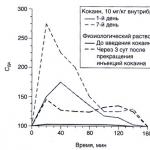In summer, when the hot sun penetrates the house through window glass, many people have a desire to protect themselves from such influence. Great solution in this case there will be a sun protection film.
It is worth noting that this method will not only help protect you from the sun, but also well blocks the view for strangers who sometimes look into your windows. It will be especially appropriate to use film if you live on the lower floors.
Properties of protective film
Sun protection film has many advantages, which can be seen during use. Modern market offers its clients a variety of various options, which can be used for home, office or other premises.
To create sun protection properties, it is necessary to make layers of the following materials:
- metal coating;
- use of aluminum;
- titanium layer.
All these components are capable of providing reflection sun rays. The film absorbs heat, but the transparency properties of the glass remain the same.
This option can provide not only protection of the room and interior from ultraviolet radiation.
When using the film, your pets will have a comfortable stay, active growth plants don't stop.

The radiation reflection and absorption properties of this material are 90%. With the help of film in the room there will always be normal temperature, guaranteed protection against ultraviolet exposure.
Modern manufacturers produce options various shades. The differences between many films are the degree of toning.
The main types are medium and highly effective options. The selection of each of them depends on the degree of impact solar radiation.
Installation process
You can stick the sun protection film on the glass yourself.
- First you need to thoroughly wash the window on both sides.
- Next, using a spray bottle, the film must be treated with a solution of soap (preferably liquid) diluted with water. Application should be on one side only. This way, you can safely move the product along the glass until you achieve the desired position.
- Then the film must be applied to the surface. Once the product is fixed on the glass, you need to smooth out the defects using a spatula.
After this, the film should dry. The final step will be to remove excess material until the desired size is obtained.
In this video you can clearly see how to stick solar control film on a window:
Those entering our home through windows often cause a lot of inconvenience. Ultraviolet radiation negatively affects well-being and mood. Sun protection film on windows will help protect yourself and your loved ones from this.
Main purpose of films
The rays of the sun penetrating into living spaces can ruin any interior, because walls, curtains, and furniture are subject to the process of fading. In addition, excess ultraviolet radiation negatively affects house plants, animals and the human body. Modern reflective films successfully solve these problems. They effectively reflect the sun's energy, preventing the glass and objects inside the apartment from heating up.
Film properties
The modern market offers many films that can prevent the penetration of sunlight into apartments and offices. Sun protection properties are achieved by repeatedly applying layers of aluminum and titanium metals. It is these metals that provide reflection ultraviolet rays and heat absorption, while the transparency of the glass remains the same. Sunscreen film on windows will not only help protect the interior of the apartment - it will also ensure a comfortable stay for pets and active growth of plants.
Window films can reflect and absorb up to 90% of solar radiation, as well as up to 70% of heat, providing a cool climate and protection from solar radiation. Films are available in various shades and have different degrees of toning. Depending on the level and amount of penetrating light, you can choose a film with to varying degrees tinting, which will control the penetration of rays and provide comfort.

Solar control film for windows: types
Today there are many types of films with different characteristics and scope. There are products whose installation is quite simple and can be done independently, without the involvement of specialists. The only condition is clean glass. As a rule, such films are applied to the inner surface of the window. The thickness of the protective material ranges from 110 microns and above, depending on the manufacturer.
Reflective sun protection film for windows has completely different parameters. Reviews from people who have used this option confirm that in addition to protection from ultraviolet radiation, it is resistant to mechanical stress. The minimum thickness of such a film is 300 microns.
Depending on the effectiveness, films come in two types:
- medium-effective - transmit up to 40% of light and filter up to 70% of sunlight;
- highly efficient - reflect the entire ultraviolet flux, transmitting more than 50% of the light.
All reflective films meet environmental standards; they do not burn and do not emit toxic substances.
Preparatory work
It is not that difficult to apply solar control film to windows, but the procedure still requires certain skills and knowledge. Therefore, it is necessary to strictly follow all rules and recommendations if there is a need to do this work yourself. First you need to make accurate measurements of the glass that needs protection. After this, the calculation is carried out required quantity and cutting the material, adding 0.5 cm of margin to each side. You should know that rolls are produced standard width- 1.52 meters. For convenience, marking and cutting are carried out on any hard surface using a felt-tip pen, ruler and scissors, and it is necessary to check each corner.
Installing solar control film on windows: features
Reflectors can be installed on glass on the internal surface, external surface, and also inside the glass unit (as a rule, this happens at a window manufacturing plant). The maximum effect is achieved if the film is glued to the outer surface. The sun's rays are reflected without heating the glass unit. When installing film on the inside surface of a window, efficiency can be significantly reduced. After all, the glass unit is heated, and a heater effect is created.

How to glue solar control film on windows
Do-it-yourself installation is usually carried out only on the inner surface of the window. To do this, you need to prepare in advance a mixture of purified water with shampoo (5 drops of shampoo per half liter of water), window cleaner, a spray bottle, a spatula and a knife. First you need to wash the glass until complete cleaning from dirt, dust and possible greasy stains. After this, the mixture is applied with a spray bottle to the adhesive side of the film and to the glass. This is necessary so that you can move it along the glass until it reaches the optimal position. After this, you need to get rid of air bubbles. To do this, moving from the center to the edges, smooth the film with a spatula.

Well, we told you how to glue solar control film on a window. By the way, there is important point, which must be taken into account. If energy-saving coating is applied to the inner glass, then gluing the film can cause glass destruction. Thus, in this case, only external use of the reflector is possible.
Benefits of using solar reflectors
The use of sun protection films has a number of advantages that can be appreciated literally in the first days after installation. In the summer months there will be an opportunity to save significantly on electrical energy, because the air conditioner will turn on much less often. In winter, heat loss will be reduced, which will also help preserve family budget. In addition, reflectors protect the home from the penetration of sunlight, as a result, the interior of the apartment, furniture and objects will retain their original color, and the quality of life of the inhabitants will become much more comfortable. It is worth noting separately that the material we are considering is additional sound insulation, and in the event of a foreign object accidentally falling into the window, the glass will not crumble into pieces.

Removing Film
There are many sources of information on how to apply solar control film to a window, but sooner or later this film has to be removed, and then certain problems may arise. Dismantling is a process that requires certain skills and free time.

There are several ways to clean glass.
- Mechanical. Film using sharp knife cut into strips, the edges are raised and successively removed. However, this can damage the glass, plus, the method in question takes a lot of time if the amount of work is large.
- Chemical method. Ammonia is applied to a cloth, which is attached to the surface of the glass and left for several hours. After this, the film can be easily removed without leaving any traces. All that remains is to thoroughly wash the surface.
- Using equipment. Construction hair dryer sufficient power copes with this task perfectly. Under the flow of hot air, the film begins to rise. It is better to move from the edges to the center. After removing the reflector, a small amount of glue remains on the glass, which can be easily removed special solution. This method allows you to remove the outdated solar control coating much faster without damaging the glass surface.
How to glue solar control film to a window quickly and reliably? The answer to the question is of interest to many urban and rural residents, since ultraviolet radiation causes a lot of discomfort in warm time year. In such situations, the use of protective equipment becomes appropriate. It is possible to perform the procedure yourself if you have instructions and free time. The guide is suitable for a private house or apartment for plastic and wooden windows.
Types of solar control film
- Matte. It is used mainly indoors for installation on partitions and doors. With its help, a decrease in transparency and light penetration is achieved.
- Mirror. Placed on glass to directly reflect the sun and prevent the room from heating up.
Gluing mirror protection allows you to create a surface with one-way visibility. Thus, it will be possible not only to prevent heating of the room, but also to improve the protection of the home from unnecessary attention from strangers.
Features of film against heat and sun
Some people use regular protective equipment instead aluminum foil or curtains made on its basis. This approach is effective, but does not provide sufficient lighting in the house and visibility. In such cases, it is better to stick a special mirror coating. It can be applied externally or internally depending on the configuration. The products are made of metallized polyethylene terephthalate and have a service life of two to three to four years. The best option Tinting is considered to be applied on the inside, as it is the most durable.

Installation features
Before starting work, you need to prepare equipment and tools:
- mirror and glass cleaner;
- sprayer (if possible);
- rags, sponges;
- stationery or special knife;
- viscose or cotton fabric for alignment and correction;
- spatula.
The easiest way to install tint protection is with adhesive tape or tape. But according to reviews, this method is not reliable. It is recommended to purchase a special self-adhesive variety or prepare glue at home.
To ensure that the protection adheres correctly and reliably, the work is carried out in several stages:
- Washing the window. It is advisable to wash away dirt from both sides for aesthetic appearance and reliable gluing.
- Preparation of the solution. To do this, you will need to dissolve a small amount of liquid soap and warm water. It is not recommended to foam the liquid as this will impair the adhesion.
- Align the film with the window. You will need to apply the protection to the glass and move it until it “stands” straight. Smooth the surface towards the edges and remove bubbles by smoothing with a viscose or cotton cloth.
- After taking measurements, remove excess parts at the edges using a knife.

Many consumers use this method for easy and quick gluing. regular window and a balcony. But how can you apply solar control film to a window so that it sticks better in all situations? It is not recommended to pre-make templates or cut the film according to measurements before gluing. After installation, contraction and deformation with the appearance of gaps is possible. Detailed and visual information You can learn about the overlay from the video.
The service life of vandal-proof and sun-protective surfaces can be extended by using the following recommendations instructions for use:
- choose exclusively opaque products;
- It is useful to select products with anti-vandal properties to prevent break-ins and scattering of glass fragments upon impact;
- It is recommended to trim the edges of the product only after complete drying and shrinkage;
- within a month after the work, it is not recommended to wet the surface to avoid peeling off;
- When washing windows, it is recommended to avoid aggressive detergents.

Advantages and disadvantages of solar control film
Regular and perforated products are distinguished by the presence of additional properties useful for operation:
- high degree of heat reflection, preventing overheating in the warm season;
- protection from thieves and prying eyes;
- preventing fading of curtains, furniture, indoor coverings.
A significant disadvantage may be the potential harm to indoor plants needing ultraviolet light. But modern modifications protective equipment pass enough sunlight, therefore they do not harm flowers and seedlings.
Conclusion
Gluing protective equipment against ultraviolet radiation and overheating of premises in the warm season can be carried out without the help of specialists. To work, it is enough to have a soap solution, film and glass cleaning products on hand. To perform the procedure, it is important to choose the most suitable configurations that transmit enough light for plants, but do not allow furniture and fabrics in the interior to fade. Quality options additionally provide protection from prying eyes and reduce the likelihood of break-ins.
More interesting things on our website:
Here we describe in detail how to apply static stained glass film to glass or mirror. Static films are held on the surface no worse than films with an adhesive layer. Please note that in order to securely attach the static film to glass or mirror, this surface must be perfectly smooth. If your glass or mirror has deep engraving or decorative elements, then the film may not stick in these places.
How to stick static stained glass film
1. Prepare necessary tools. You will need: a ruler or tape measure, a pencil, scissors or a utility knife, glass cleaning liquid, a spray bottle or an empty glass cleaning liquid bottle, a small piece of soft cloth or a plastic squeegee (a type of spatula used for applying self-adhesive films). The plastic squeegee can be replaced with a discount card with rounded corners or other similar thin and flat object without sharp corners.
2. Measure the surface to be covered. Apply the measurement results to the back of the film, and then cut out the required piece of film. If you glue the film to a window, then it is necessary that there is a gap of 2-3 mm between the edges of the film and the glazing bead or window frame. It is not recommended to glue the film close to the window frame. If you stick it closely, the film may come away from the glass.
3. Clean the glass thoroughly using a neutral detergent.
4. Fill a bottle with a spray head or a spray bottle with regular tap water. You can use an empty window cleaner bottle. You can add one or two drops of dishwashing liquid to make the film glide better, but this is not necessary.
5. Spray plenty of water onto the surface to be pasted. There should be no dry areas.
6. Peel off about a third to half of the protective film. Apply the part of the stained glass film from which you separated the protective film with the smooth side to the glass. It is more convenient to start gluing the film from the top of the glass, working downwards. Start to smooth out the part of the film stuck to the glass with a rag, squeegee or discount card. The direction of movement for smoothing is from the center to the edges of the canvas. Thus, it is necessary to smooth out the small wrinkles that have formed and expel water from under the film. If large folds have formed and they are not smoothed out, then the film is laying crookedly. Separate the film from the glass and stick it again. Do not press too hard on the film when smoothing, so as not to scratch it.
7. Gradually peel the remaining protective film from the stained glass film and smooth it until the entire piece is on the glass. After this, check if there are any wrinkles left anywhere. If there are any, then you can lift the edge of the film on this side, lay the film again more evenly and smooth it out.
8. Upon completion of applying the film, make sure that you smooth out all the folds and expel any water bubbles. If there are still water spots under the film, but they are not bubbling, do not try to remove them completely. They will dry on their own within a few hours at room temperature. If the edges of the film lie close to the window frame or extend onto it, carefully trim off the excess part of the edge of the film using a utility knife and a ruler.
9. When you finish applying the film, do not throw away the protective film that you removed from it. Roll this film and save it. Static stained glass films can be used an infinite number of times. If you suddenly need to remove the film and then reapply it, it is better to store it applied to the protective film. This is necessary so that dust does not collect on the side of the film that is used to glue it to the surface of the glass or mirror.
What to do if during storage of the film it becomes wrinkled and wrinkles form that do not smooth out when applying the film
In order to smooth out heavily wrinkled areas of the film, it must be heated. When heated, the film becomes elastic. Suitable for heating film household hair dryer for drying hair.
Place the film on flat surface, for example a table. There is no need to remove the protective film. Turn on the hair dryer and bring the hair dryer nozzle closer to the jammed area of the film. Heat the film until elastic, turn off the hair dryer and smooth out the crease soft cloth or plastic card. If the crease is not smoothed out or the film has cooled down and is no longer elastic, heat it again. Do not overheat the film, and also do not press the film with force so as not to stretch it. Perform this operation on all heavily wrinkled areas of the film.
Care of the pasted surface
It is recommended to wash the surface covered with static stained glass film with neutral detergents or ordinary soapy water.
How to remove static stained glass film from the surface of glass or mirror
You can easily remove the static stained glass film from the pasted surface, regardless of how long it has been glued. To do this, simply pry up the corner of the film on either side with a thin and sharp object. For example, ordinary kitchen knife. Pull the separated piece of film. The film will peel off easily and will not leave marks. Remove all film completely.
Below are videos demonstrating how to work with static films from Konrad Hornschuch, a manufacturer of films under the d-c-fix and Alkor brands.
Video demonstrating the application of Static Premium films
Static Premium - films with increased thickness to simplify the gluing process as much as possible. Also, thanks to the thicker material, the film pattern looks more expressive. Please note that Static Premium series films do not have a siliconized backing with centimeter markings. The side on which the film is applied to the glass is covered with a transparent protective film. In this video, before applying the film, a man sprays a very small amount of water on the glass. In this case, in places where there was no water between the film and the glass, stains may form, which will disappear after some time. We recommend spraying the glass much more generously; there should be no dry spots. You can spray not only glass, but also inner side film after removing the protective film.
How to remove water and bubbles from under Static Premium series film
Getting water out from under the Static Premium series film is as easy as shelling pears. With this thickness of the material, the film does not bunch up, and the surface of the film has an additional varnish coating to protect it from scratches. Instead of the squeegee used for demonstration, you can use any discount card. The main thing is that the edges of the object you use for forcing are not too sharp. An object with sharp edges can be wrapped in a cloth or household napkin.
To watch the video in larger size, click on the Yuotube icon in the viewing window.
Video demonstrating the application of Static films
The difference between the d-c-fix films of the Static series and the Static Premium series is the smaller thickness of the material. It's the same as normal stained glass films d-c-fix and Alkor with an adhesive layer - 110 microns (for films of the Static Premium series the thickness is 150 microns). Also, Static series films have a backing with markings. The process of applying Static series films is technically no different from applying Static Premium series films. Due to the thinner thickness of the material, you need to ensure that the film does not bunch up and remove water and bubbles more thoroughly.
When pasting relatively small area You may not notice any difference in usability between films with the same pattern from different series. In this case, you should not spend money on a significantly more expensive film from the Static Premium series. When pasting large areas, the difference in the thickness of the material plays a significant role in the ease of use and the purchase of a more expensive film from the Static Premium series seems justified.
To view the video in a larger size, click on the Yuotube icon in the viewing window.
Tinting film is considered to be a film that can be used to cover windows and other glass surfaces. As a result, laminated glass receives additional advantages: strength, sound insulation, and light reflectivity. Window films are a relatively new decoration technique. However, its functionality has already been appreciated not only by professionals, but also by ordinary consumers. By following the technology, such a film can be easily pasted on your own.
Types of films
Today, there are about 100 different modifications of tinting film on the construction market. It is divided into several types: protective, mirror, sun-protective or reflective, energy-saving and matte.
Protective films provide the glass with additional strength; they are available in transparent and tinted versions. Fragile surfaces covered with film acquire good anti-impact properties. If the glass breaks, the fragments will not fly to the sides, which completely eliminates injury.
Tinting on glass looks very impressive mirror film. The windows receive an additional reflective effect, creating one-way visibility. The surface of the film will protect the interior from the scorching rays of the sun and prevent the colors from fading.
The direct purpose of solar control film is to protect premises from excess sunlight. The glass gains reflective ability and additional strength.
Energy saving films have multilayer structure. They will retain heat well indoors in winter and additionally provide coolness in summer. This significantly saves energy. You don’t have to turn on the heaters in winter frosts and use less air conditioning in the summer heat.
Matte film is available in plain and patterned colors. Has decorative functions. Additionally enhances the strength of glass and protects the interior from the scorching rays of the sun.
We glue the film ourselves
The film can be glued to double-glazed windows and windows in wooden frames. The service life of the coating depends on adherence to the gluing technology. As a result, the surface should be completely flat and smooth, without bubbles or voids. It is recommended to tint the windows before installing double-glazed windows. It is more difficult to apply film to built-in windows. The process will require some experience and skill. WITH wooden frames It’s easier - just remove the windows, remove the glazing beads, stick the film, nail the glazing beads and install the windows back.
To tint your windows yourself you will need the following tool:
1. Tint film purchased at any hardware store.
2. A wiper with a strip of rubber along the edge. This will allow you to thoroughly smooth the surface of the film.
3. Spray bottle for spraying water.
4. Painting knife with sharp blades.
5. A special scraper for scraping off dirt.
6. Liquid soap or shampoo, cotton rags.
When installing the film, it is advisable that temperature regime The environment ranged from +7 to +40°C, humidity was 20-80%. A low temperature will not allow the adhesive layer to dry quickly and gain strength. If the temperature is high, then the film, on the contrary, will dry too quickly. If the humidity is high, the adhesive surface dries slowly and the bond strength decreases. When the weather is hot and humidity is low, the applied film dries faster.
Before covering the glass with film, be sure to wet clean the room. Particles of dirt and dust will deteriorate the quality of the coating, which will lead to the formation of bubbles. During the pasting process, you can additionally irrigate the room with water to minimize the amount of dust. Strictly adhere to the rule: remove protective layer- stick it on immediately. Otherwise, static electricity will instantly attract lint and dust to the open adhesive surface.
Preliminary preparation of glass
Before gluing, thoroughly wash the glass with soapy water. Do not use alkaline detergents. If they are not washed off, the adhesive base of the film may dissolve. Moisten the surface of the window generously. Using a scraper, scrape off any adhering dirt from the glass and wipe dry, especially in the corners and along the rubber seals.
Open the films before gluing
Measure the surface to be covered and write down the dimensions. Cut the film according to the markings, leaving an allowance on the sides of 2-3 cm. It is better to trim off the excess later than not guess the size when cutting. If the film is narrower than glass, then the joints of the sheets should coincide with each other when gluing. Preferably the factory-cut side.
Surface pasting
Dilute alkaline-free in water liquid soap or shampoo, in the ratio: 1 tbsp. spoon per liter of water. On the cut out pieces of film you need to stick strips of tape in the corners. They must connect the decorative and protective film layers. Then separate the strips of tape, and the protective layer can be easily removed by sticking to one half of the tape.
When removing the protective layer, generously spray the adhesive surface of the film and glass. Make sure that the sections of the film are not glued together with the adhesive layer. It will not be possible to separate them. Periodically moisten the adhesive surface of the film and the washed glass with plenty of water. Place the film with the adhesive side on the glass, carefully holding the edges. Smooth with a spatula from the center to the sides, carefully removing air bubbles and water droplets.
Final stage
After gluing, trim off the extra centimeters with a utility knife. Then go around the edges and corners again with a spatula, removing air bubbles and remaining water. Wet the spatula periodically to prevent the surface of the film from being scratched. While the film is wet, you can slightly adjust it and move it. After expulsion, it will be impossible to correct anything. Carefully walk along the edges of the glued film to avoid sticking.
After final leveling of the surface, the glass unit is ready for assembly. If the frames are wooden, we fill them with glazing beads, preventing the film from shrinking. If possible, do not assemble window frames Bye adhesive layer will not dry completely. This usually takes about a week. The higher the air temperature, the faster the film will dry. After drying, it is better not to touch the surface for a day, let it “grab” well. It is better to wash tinted glass with soapy water, without using abrasive powders. They can leave scratches and ruin the appearance of the coating.

















